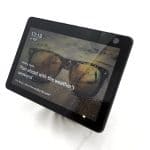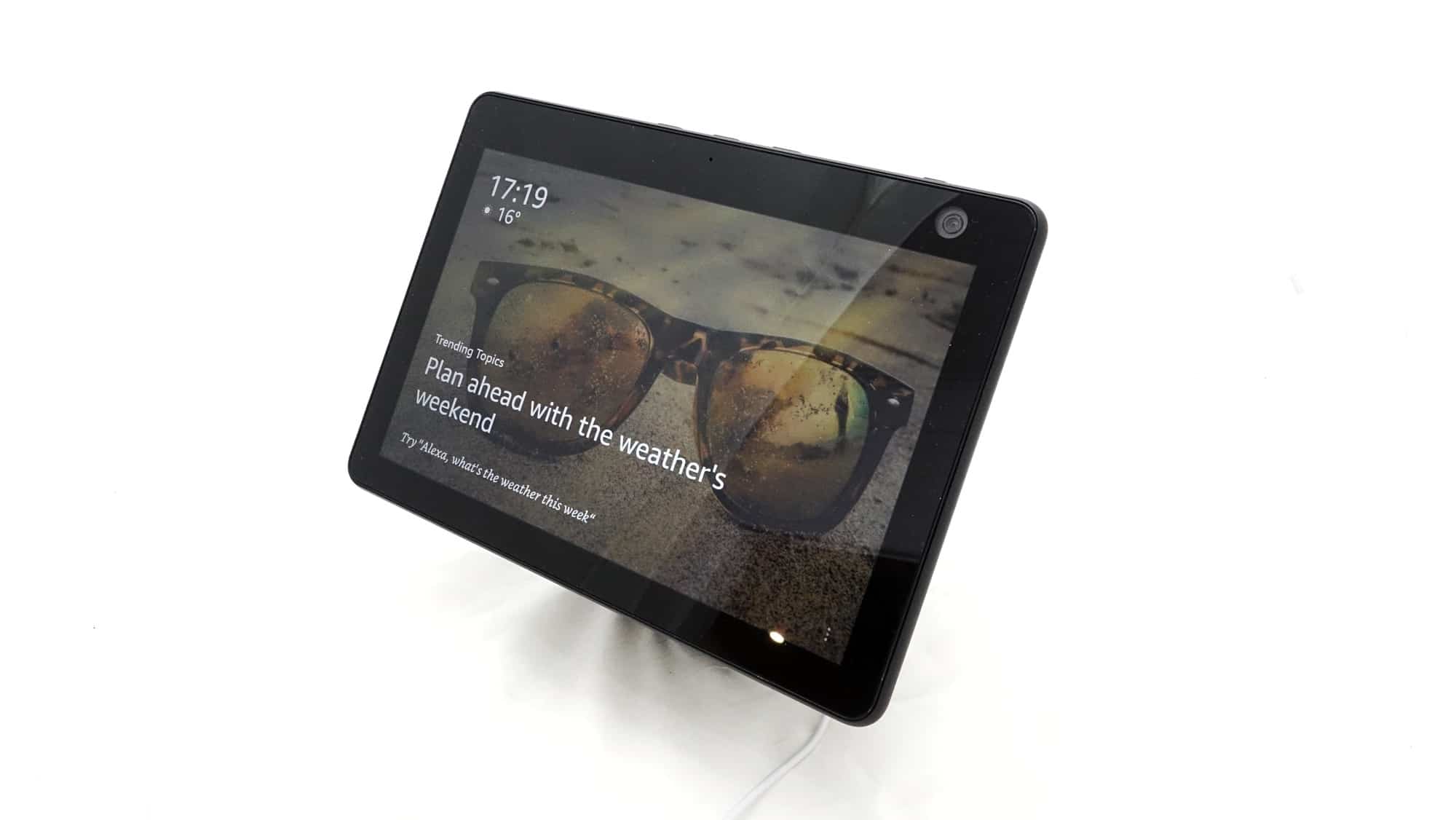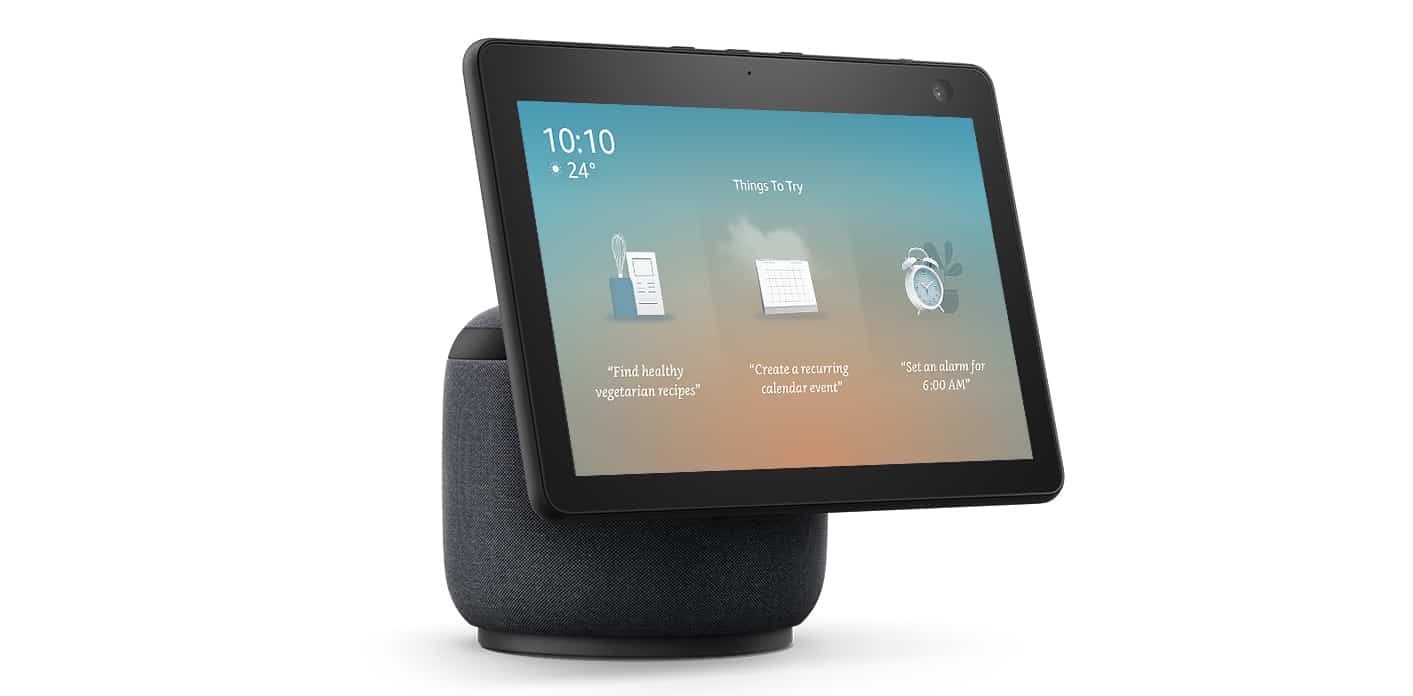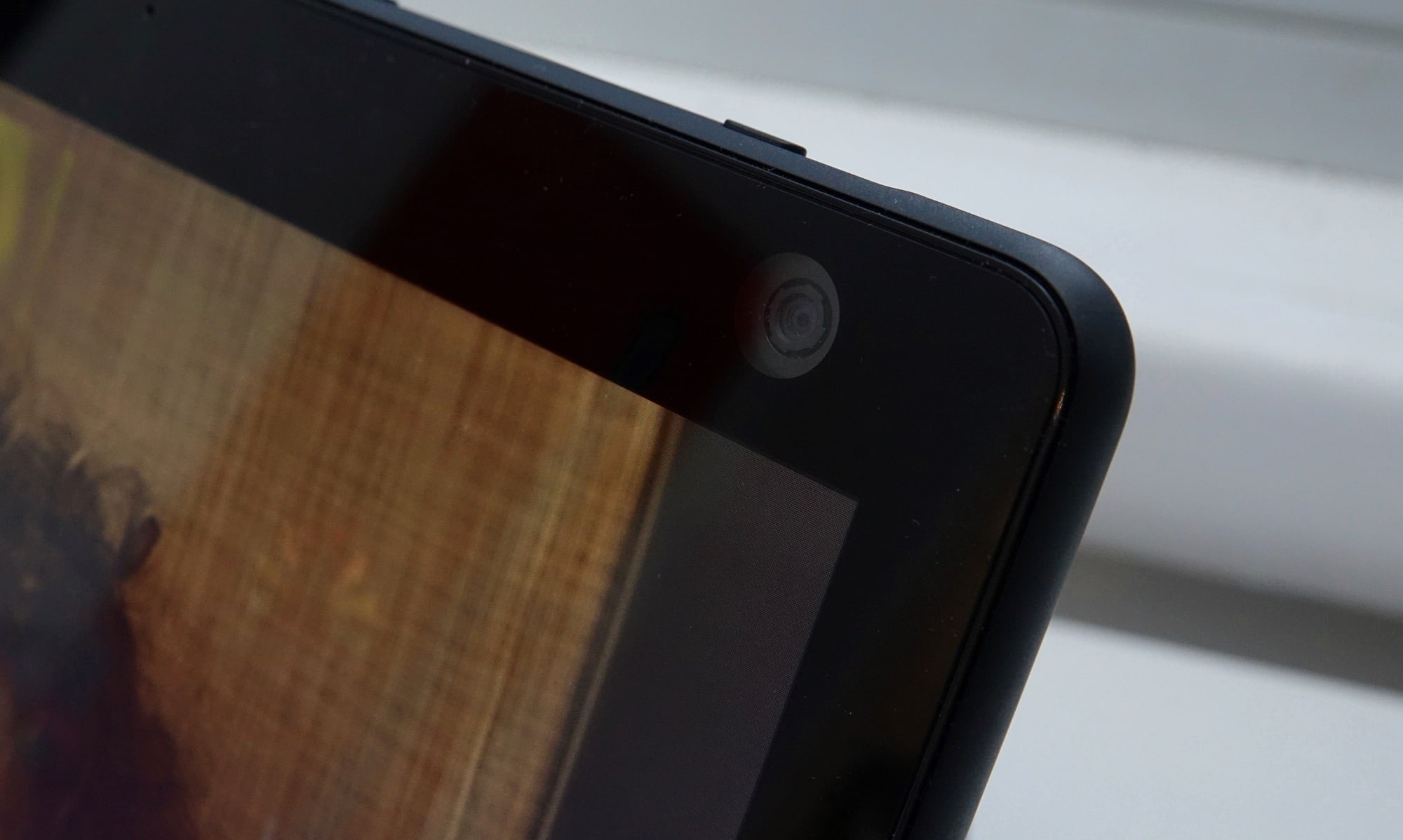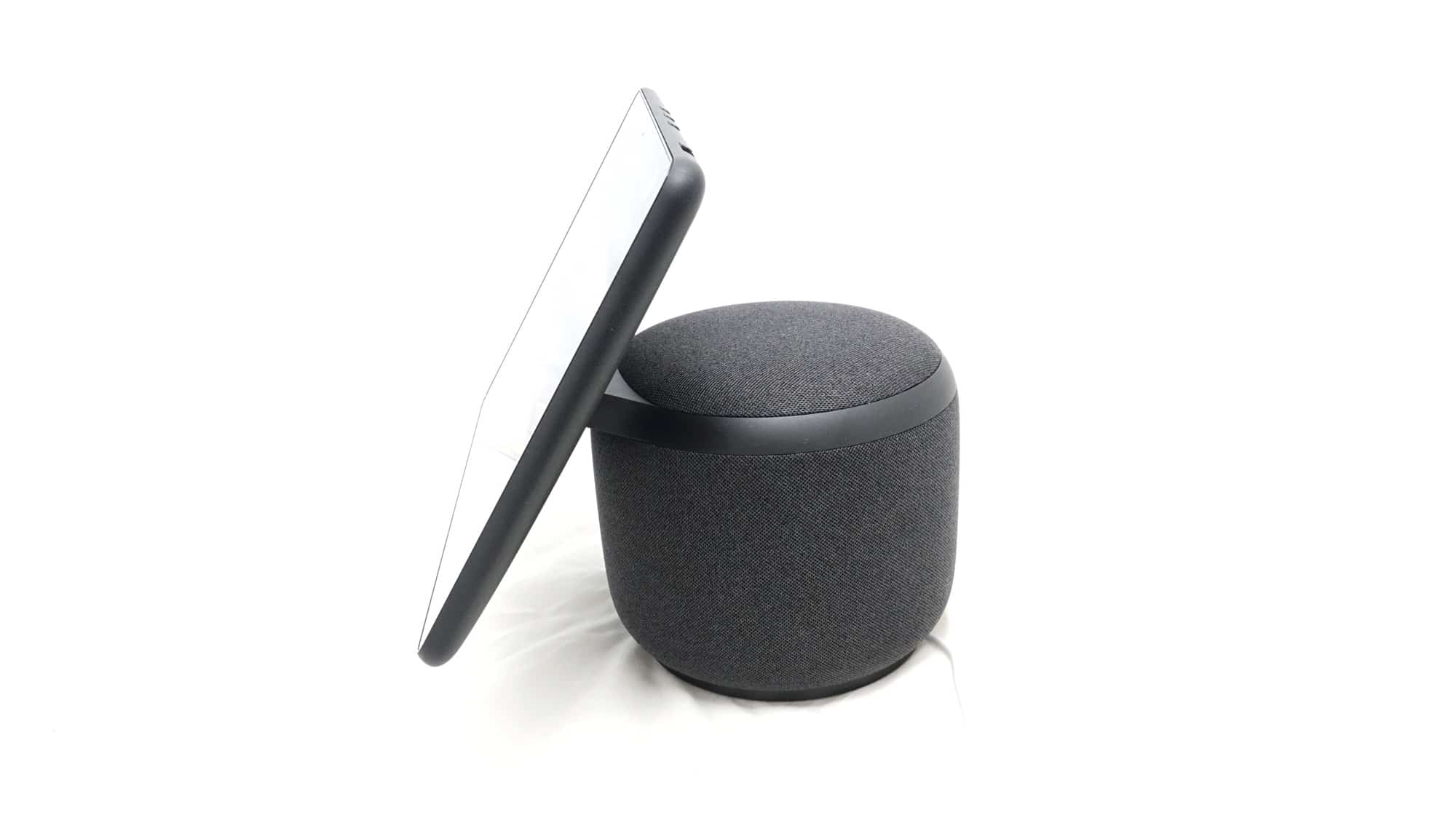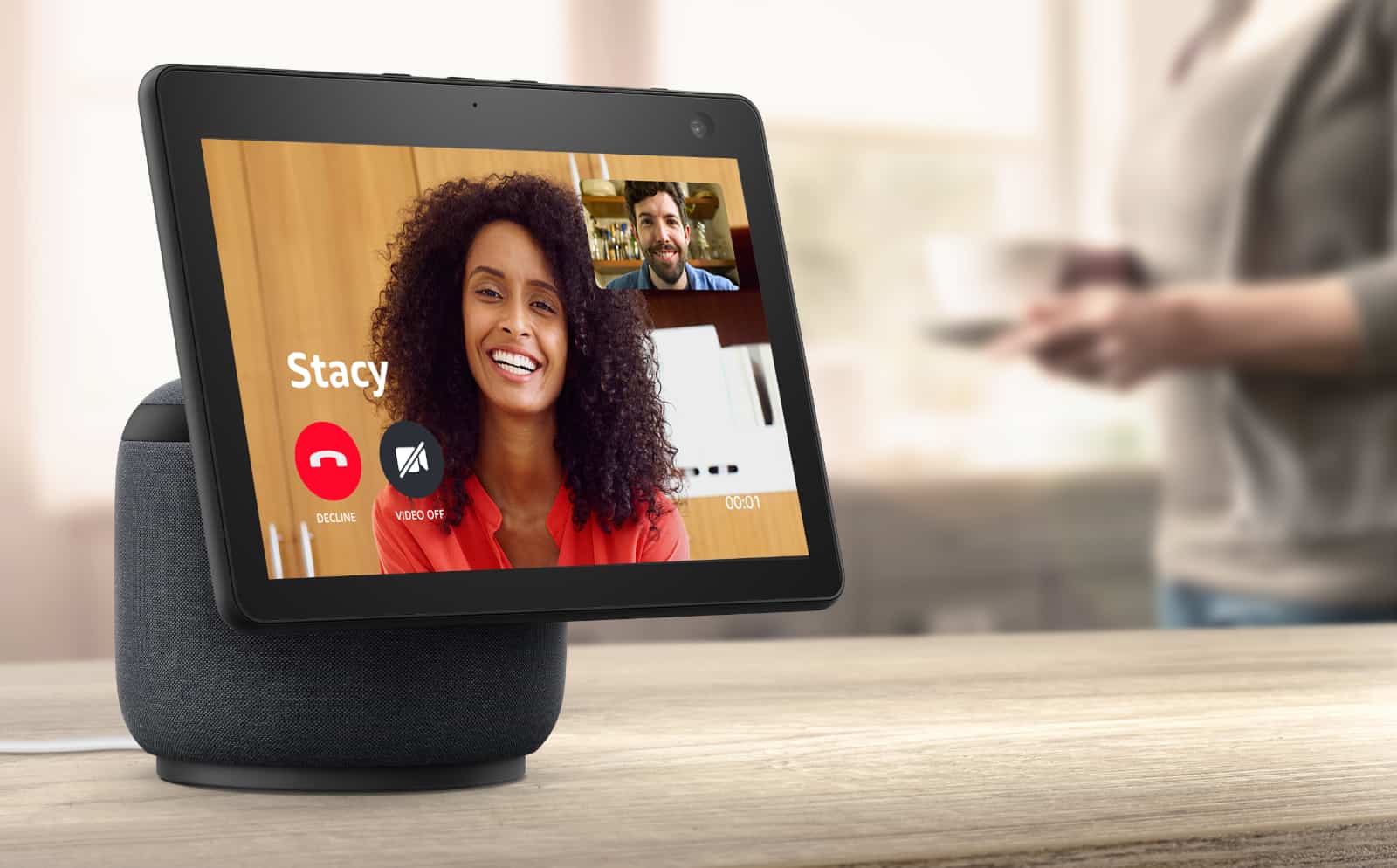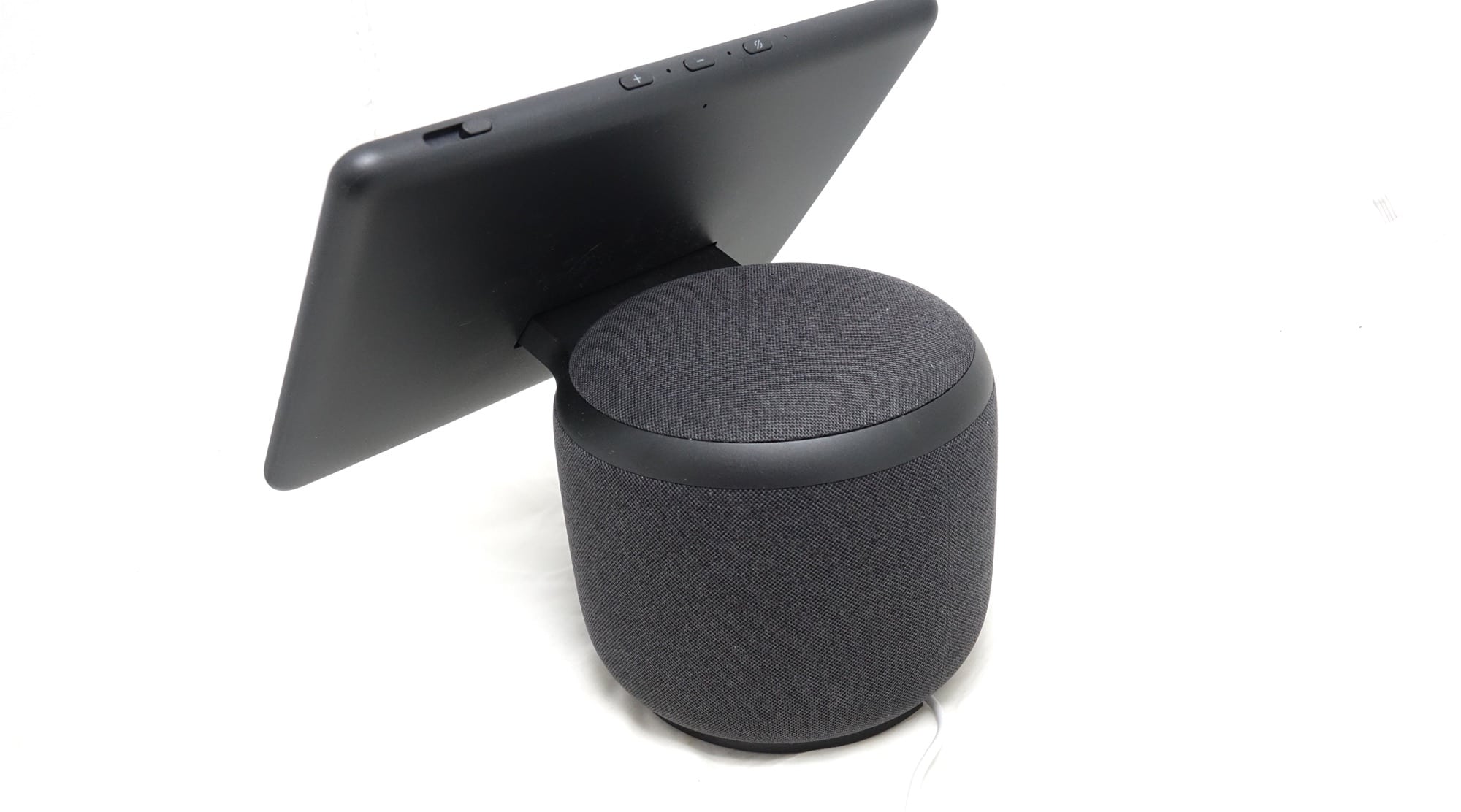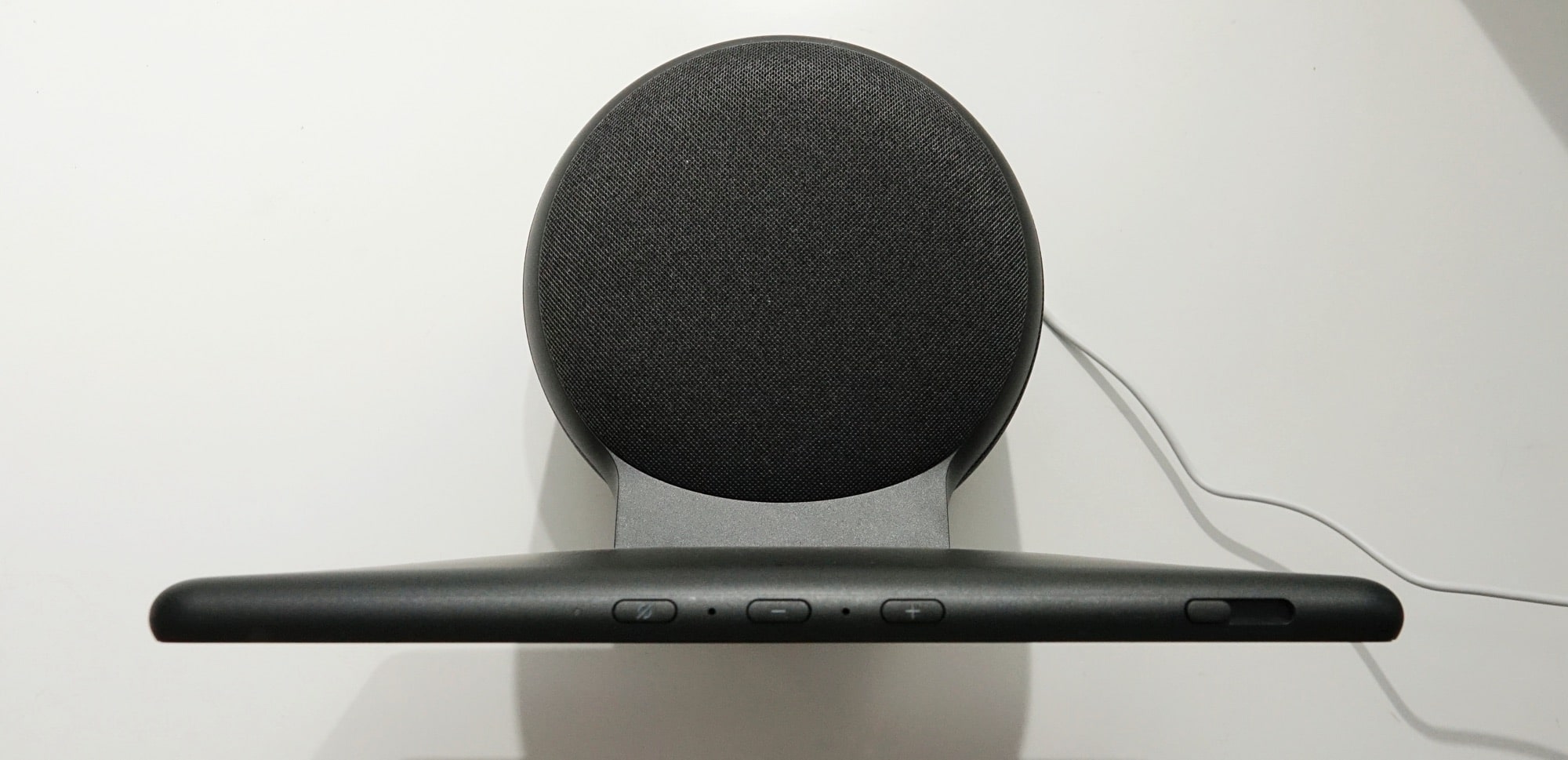Quick review
The good
The not-so-good
Smart speakers are great, but what if you want to read a recipe rather than just have it read to you? Amazon’s 2021 Echo Show 10 does that while keeping your eyes firmly trained on its display.
The rise of the virtual smart assistant has been an interesting one over the past few years. More and more people are now regularly talking to Alexa, Google, and Siri (sorry Cortana), and playing their music, hearing the news, finding out about the weather, and searching the web for information that they’d normally have to use their hands to get at.
Smart speakers allow you to do this simply by talking to them, and having them read the information out to you, but not everyone is comfortable talking into the open at something that isn’t really there. It’s why a smart display can be a great intro to the category, providing a bit of a prompt for people to work with, and even doing a little more, showing that information, not just saying it to you.
It’s a category that has been growing steadily over the past few years, and now depending on the gadget you look at, might do a little more. Google’s latest take on the smart display even included sleep tracking, nascent as it is, but Amazon’s new approach doesn’t quite offer the same eyes-on approach. It’s eyes-on, too, but eyes-on in a different way.
Rather than watch you while you sleep, the 2021 Australian release of the Echo Show 10 watches you, but only so it can follow you around and keep the screen in your perspective.
What is it?
Amazon’s latest take on the smart display is the Echo Show 10, and while it’s like its predecessor, it’s also very unlike what Amazon has made in the past.
The first Echo Show 10 came out in 2018, and wasn’t officially the Echo Show 10, but merely the Echo Show. However it was a 10 inch screen mounted to a speaker, so let’s just call it the old Echo Show 10 because why not.
Back then, it was pretty much a big screen with the back made of a speaker, and it kind of kicked off the whole concept of smart display, something we see from Google these days, too.
However Amazon is turning the idea on its head in its recent iteration. In fact, it’s not just turning it on its head, but turning it in general, building the smart display to rotate around the speaker, and follow you around in real life.
What does it do?
A little dystopian and yet still very futuristic, the Amazon Echo Show 10 uses a camera to track your position, following you around as walk about. Think of it as a smart display that’s smart enough to know where you are, and so orients and re-orients itself so that you always have the best view.
Throughout this, the microphones are always switched on, so you don’t really need to be near the screen to say “Hey Alexa” and get the screen to do things. It’s always listening, unless you’ve turned the mic off with one of the buttons up top.
However unless you block up the camera too — which you can do with a top-mounted switch — the screen will follow you, showing you not just what’s on screen, but anyone you happen to be talking to. That makes the Echo Show 10 a bit of a thoughtful smart display because it always has your perspective in view, which is nice to know.
Beyond that always-ready view, the new Echo Show 10 works rather like any other Echo speaker, because you can say “Hey Alexa” to trigger a number of routines or skills, playing music, listening to the news, hearing the weather, and a whole bunch more.
You can even use it to show off your photos like a digital photo frame, though unlike Google’s variety, Australians don’t have access to share their family photo libraries. That feature — Family Photo Vault — is only available to our American counterparts, and Amazon Australia has not revealed a timeframe for when that will launch locally. It means you can show your own photos on the Echo Show 10 if you upload them to your Amazon Photos library, but family members with their own Echo Show can’t see your photos. Sad face.
Does it do the job?
Beyond that minor gripe, the Echo Show 10 is a curious take on the smart display that delivers something different, though we’re not sure that point of difference is enough to keep us there.
For the most part, a screen that constantly orients itself to your position is cute, but whether it’s of real use will largely depend on how much you need to use that screen.
Theoretically, this tracking of the display even turns the Echo Show 10 and its ability to move into a security system with Alexa Guard Plus, but only in the US, as that feature — which is an optional extra that costs $49 USD per year — doesn’t yet work in Australia. But some things do work.
If you’re reading a recipe and needing to move about the kitchen, there’s some good reasoning there, and this will make sense. Watch a movie on Amazon Prime Video or another service, and you’ll have some use here, too. If you’re chatting to someone over Amazon’s limited video chat — which works from Echo Show to Echo Show, or from Echo Show to an Amazon app — you may find the screen’s tracking makes sense, too.
However they were the limits of what we found the display tracking good for, and most of the time, it just gets in the way.
Leave the screen in a place where it has the freedom to move and it won’t complain, but if you have objects around the place and near its rotational arc, and the screen lets out a whimper: an obstacle is in the way, and movement has to be stopped.
You can stop it from moving, of course, closing up the camera and preventing it from turning, but then that also defeats the point of having a screen that intentionally rotates.
What does it need?
Even with the obstacle issue — and it’s not hard to get over, just move that small item — our main problem with the Echo Show 10 is that it just doesn’t seem to do enough unless you’re deep within the Amazon ecosystem.
Expect Amazon Prime Video on the Echo Show 10, but no dedicated YouTube app, even though the world pretty much relies on YouTube. You can talk to Alexa and she’ll search for a YouTube video using a web browser, but it’s just not the same.
That video chat capability seems like a great use for the camera-equipped Show 10, and yet we know absolutely no one using an Echo Show or Amazon’s Alexa app to chat with. It’s supposed to work with Zoom, too, but we never found a case that made that easy or seamless, and while Skype is supported as well, again, it’s just not as easy as just supporting the apps people are using.
The Echo range of devices typically always come back to Amazon’s massive ecosystem, but at least with a speaker, you’re typically only bringing it back to skills you need your ears for, not ones that warrant your eyes.
Rather unsurprisingly, it supports music services, and yes, it supports Amazon Music and Apple Music and Spotify and other services, too, but so does every smart speaker. What it boils down to is that this is basically a rotating screen mounted to a speaker, and not an amazing speaker at that.
Shaped a little like the Amazon Echo Studio but a fair amount smaller, you’ll find a heavily bassy sound from the Echo Show 10, but not exactly breathtaking sound, and with a loss of dimensionality.
Audio quality isn’t exactly what Amazon is marketing itself on this Echo smart display, and while tracks for the Pickr Sound Test were nice enough, everything came across as shallow. Daft Punk offered a meaty punch but the mids took a backseat, while Maroon 5’s vocals were sitting behind the bass.
Only in a handful of test tracks did the Echo Show 10 feel like the bass wasn’t steamrolling over everything, and the sound was typically bright and bassy, with very little in the mids to speak of.
The bottom end just comes across loud and clear over everything else, and while some might want that, it is by no means as nice a sound as what can be found in smaller Amazon speakers, such as the 2020 Echo.
Is it worth your money?
The point is you can largely do better for a smart speaker, and even with one from Amazon.
At $399 in Australia, the Amazon Echo Show 10 feels like it needs something more to make its marginally-under-$400 price tag seem like a deal, as opposed to a neat take on the space that doesn’t add much. At a full $50 higher than the Australian recommended retail price of the 10 inch Google Nest Hub Max, the only difference here is that the screen moves with you, and we’re not sure that’s quite a bonus.
You get a Zigbee Hub built into the hardware, mind you, handy if you’re installing smart home devices and other bits of the Internet of Things (IoT), but we’re not sure if that really helps you swallow the cost of those speaker and smart display.
Yay or nay?
Live in the Amazon world and the Echo Show 10 might make more sense, especially if you have relatives that own one as well. You can talk together on it, watch movies, and load news and other information from the web and Amazon, and have it follow you. If you’re reliant on Alexa for much of your life and have other Amazon devices — say something like a Ring Video Doorbell — you can show the video from that security camera on your Amazon-made Echo Show, and from other gadgets, too.
But if you live outside of Amazon, the Echo Show 10 is less impressive. Specifically, if you live in a Google world, the Echo Show 10 feels like it just doesn’t do as much.
Customers yearning for a smart display of an Echo smart speaker they already love may find something intriguing about the Echo Show 10, but it’s very much built for those who love Amazon and Alexa, less so for others.
Ultimately, we just wish it did more, and that you could make it into the smart device built for your life, not one governed by Amazon’s. Give it a proper web browser, give it a YouTube app, give it more chat services and social platforms. You’re being given a big screen that can keep your perspective trained on it, so it really needs to be given just that much more to work with. It’s a neat idea missing so much more.
When it has that “more”, the Echo Show 10 could be a great option, but right now, we’d suggest sticking with an Echo speaker, because it feels more like it takes advantage of the hardware in Australia, rather than leave you with an otherwise ordinary screen experience and little to use it with.
